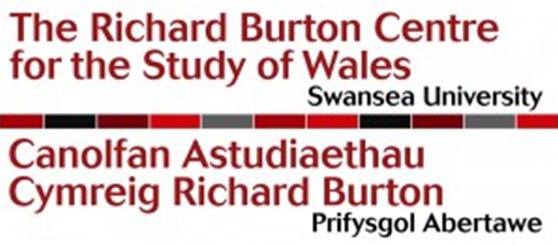I attended the Richard Burton Centre’s annual postgraduate conference at Swansea University on the 8th of June and was very impressed by the high standard of papers delivered throughout the day. The first panel was on Writing Welsh in English, a subject area in which Swansea is of course richly endowed in terms of staff and postgraduate students at the Centre for Research into the English Literature and Language of Wales (CREW). Liza Penn Thomas kicked things off with a lively discussion on the development of theatre in Wales during the interwar years, showing how the work of Welsh authors such as Richard Hughes and Jack Jones was affected by the strict censorship of the period. Clare Davies, who also organised the conference, gave a fascinating glimpse of her current doctoral research on Welsh intellectuals in the twentieth century with a paper on T. S. Eliot, Saunders Lewis and canon (de)construction. Kieron Smith’s timely paper on Caradoc Evans followed, in which he traced the changing ways Evans’s work has been discussed and critically appraised since the controversial publication of My People in 1915.
The focus shifted to history in the next session, in particular labour history in Wales, and specifically labour history in Swansea and its surrounding area. Bleddyn Penny offered some new perspectives on Welsh labour history, drawing on the insights he’s gained from his own research on labour relations in the Port Talbot steelworks in the post-war period. His emphasis was on how the experiences of sectors of the workforce – such as office workers, factory workers, agricultural workers and managers – which have hitherto been neglected in Welsh historiography, urgently need to be studied in greater depth. Matthew Small’s paper also focused on the experiences of workers in the Swansea area, in this instance of the copper workers who lived in the Trevivian settlement during the nineteenth century (which is now part of the Hafod area of Swansea). He vividly conveyed the mixture of paternalism, generosity and self-interest that motivated its founder, the industrial baron and politician Henry Hussey Vivian. Alex Jones closed the session through looking at the insights which literature, in particular the novels and autobiographical writings of miners and ex-miners, can offer into the history of the coalfields in Wales and further afield. She focused in particular on the frequent depictions of disability in the work of Sid Chaplin, Bert Coombes and others.
An excellent session through the medium of Welsh followed after lunch, with two fascinating papers from Meilyr Powel and Catrin Heledd Richards. Firstly, Meilyr uncovered some of the reasons given within the Welsh press for waging the First World War, specifically in The Welsh Outlook, to demonstrate that religion was used consistently to justify the conflict on the basis that, through the heretical distortion of Nietzschean philosophy, Germany posed an existential threat to established Christian civilisation. Meilyr reminded us that it can be dangerously anachronistic to view the war from a purely contemporary standpoint without at least considering the motivations that lay behind such an immense conflict among those who fought and supported it. In the session’s second paper, Catrin offered a long overdue critical appreciation of Dafydd Rowlands’s experimental novel Mae Theomemphus yn Hen (1977). By focusing closely on its title, she showed how a complex web of intertextual and contextual references to the works of William Williams Pantycelyn, Kate Roberts and others, and to the author’s own childhood experiences, are woven into the novel.
The final session of papers shifted once again to Welsh history, this time within an international context. Mark Rhodes, a visiting postgraduate from Kent State University, discussed the differing ways in which Paul Robeson has been memorialised in Wales inside a variety of institutions such as the National Library of Wales and the South Wales Miners’ Library. Syd Morgan gave an exciting snapshot of his PhD in progress on the relationship between Plaid Cymru and Fianna Fáil between 1926 and 1948, through focusing on Éamon de Valera’s post-war visit to Cardiff to speak at an Anti-Partition League meeting. Finally, Sam Blaxland provided some surprising insights on the attitudes of the Conservative Party towards Welsh nationhood between 1945 and the second referendum on devolution in 1997.
An informal debate between Simon Brooks and Daniel Williams brought the day to a close, both of whom have recently published new volumes with UWP, Pam na fu Cymru and Wales Unchained. The lively discussion which ensued when it was opened to the floor showed clearly that the radical thesis put forward in Pam na fu Cymru to explain the failure of a stronger national movement to emerge in Wales during the second half of the nineteenth century raises important and sometimes difficult questions. The final session was skilfully chaired by the historian Daryl Leeworthy, who made his own insightful observations on the debate. Overall, it had been a packed day of discussion and insight, which demonstrated the high level of research currently being pursued across the English, History and Welsh departments at Swansea University.
Dr Llion Wigley


